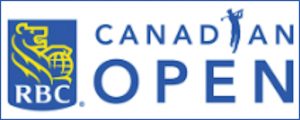Jun
A Look at the RBC Canadian Open
 They are okay in Canada with the RBC Canadian Open making its earliest start in history, and its first in June since 1989. For 12 years in a row, the event was found in a tough time slot between the British Open and a World Golf Championships event, not to mention being a continent away from the prior event, where almost every top golfer in the world was playing. Not that this year is perfect – they are a week before the U.S. Open, which is located half a continent away and where almost every top golfer in the world will play. So let’s look at the strength of field:
They are okay in Canada with the RBC Canadian Open making its earliest start in history, and its first in June since 1989. For 12 years in a row, the event was found in a tough time slot between the British Open and a World Golf Championships event, not to mention being a continent away from the prior event, where almost every top golfer in the world was playing. Not that this year is perfect – they are a week before the U.S. Open, which is located half a continent away and where almost every top golfer in the world will play. So let’s look at the strength of field:
| 2019 | 2018 | 2017 | |
| Top 10 | 4 | 2 | 1 |
| Top 25 | 6 | 6 | 2 |
| Top 50 | 14 | 14 | 8 |
So, a little better. Values are per the Hawley Ratings, and don’t forget that the no. 1 player in the world, Dustin Johnson, has RBC among his sponsors, affecting the “Top 10” line of that little table. Johnson has two wins (one of them on the Euro Tour), two runner-up finishes, and four other top-10s in 12 appearances this year, making him the logical choice as favorite in this event.
You can say a lot of good things about Rory McIlroy and Brooks Koepka, too. McIlroy has a fabulous year going (nine top-10s, including seven in a row from January to March) and then left his fan base with kind of an empty weekend last week when he missed the cut in the Memorial. Koepka, of course, has won all of those majors but has been a little less consistent in the non-headline 2019 events (Honda, Palmer, Zurich, Nelson) with two top-10s, one mid-pack finish, and one missed cut. Justin Thomas, the other top-10-ranked player in the field, comes in a little cool. In his last five appearances, he has a string of four straight finishes in the top 40 but outside the top 10, then missed the cut at the Memorial.
Also with a strong recent record are Matt Kuchar (also missed cut last week but with five straight finishes of 12th or better prior to that), Jason Dufner, Cameron Tringale, Sung Kang, and Shane Lowry. All of those in the preceding group have two top-10s in the last four appearances.
Hamilton is at the west tip of Lake Ontario, about 45 miles southwest of Toronto (where they are pretty much totally focused on the NBA finals) and 75 miles northwest of Buffalo. The host course, Hamilton Golf & CC, opened in 1915 and is under 7000 yards. The Canadian Open moves around a circuit of courses and this is the sixth Canadian Open at this course. Three occurred long before you were born and three have come in this century – 2003 (Bob Tway), 2006 (Jim Furyk), and 2018 (Dustin Johnson). The latter two players are in this week’s field.
Based on the results of the three Canadian Opens played on this course in the 2000s, putting is by far the stat most highly correlated with success – one of the highest correlations among all stats and all Tour courses. Greens in regulation also correlates well. Lowry displays a huge margin over the rest of the field in the extent to which his statistics profile matches those stats – he’s no. 1 among all PGA Tour and Euro Tour pros in putting (i.e. putts per GIR) and in the top five percent in GIR. Thomas (top five percent in both putting and GIR) and Matt Every (top one percent in putting and top 30 percent in GIR) also look like guys who might like this course. Higher-ranked players who look like good fits include Kuchar, Dustin Johnson, McIlroy, and Koepka. Guys who might be at the right course for a breakthrough include Dominic Bozzelli (top two percent in putting, near the middle in GIR), Wyndham Clark, Nate Lashley, and Talor Gooch.
Adam Hadwin (48th in the Hawley Ratings) is the top-ranked Canadian player in the field. Three other Canadian winners of PGA Tour events also are here — Corey Conners, winner of the 2019 Texas Open, Mackenzie Hughes, and former Masters champ Mike Weir. Weir, who continues to appear without experiencing a lot of success, returns for his 28th Canadian Open. Six other Canadians are in the field.
NOTE FROM TOM: This week for the first time I am including the Hawley course fit numbers in the table of ratings and win probabilities at this website. The course fit number – a representation of how strongly a player’s statistical profile matches the profiles of successful player in prior events on the course — is not available anywhere else. For example, repeating from just above, putting and GIR are the top statistics in correlation with success at Hamilton, and Shane Lowry is no. 1 in putting and in the top five percent in GIR. A lot of statistics and math go into the creation of those values, and, while hardly a silver bullet in terms of predicting a winner, they are solid within a much larger number of statistics in predicting the outcome of an event. (If you are into math, the value that says how much a given statistic contributes to the strength of a multiple regression calculation is the partial regression coefficient. For predicting golf events, none of these numbers is very large but the partial regression coefficient for the course fit number is a meaningful component among the set of all statistics.)
